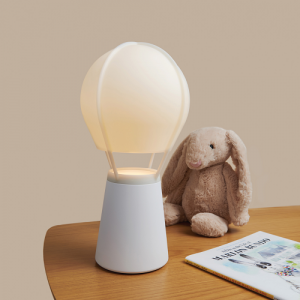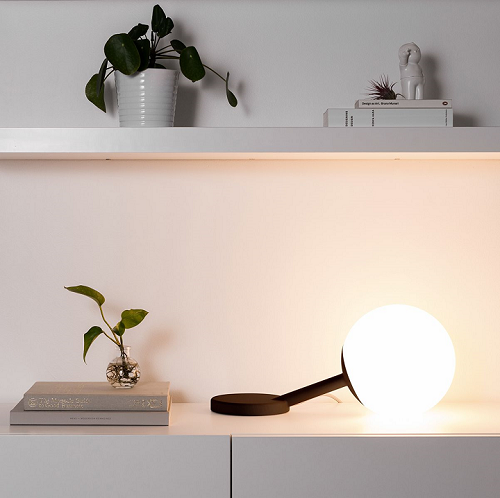While you may not think that a technology so often used by hobbyists to make small plastic toys could be responsible for the creation of elegant housewares, you would definitely be wrong. In 2017, London School of Economics graduate Ian Yang founded California-based housewares company Gantri, which is dedicated to selling beautiful 3D printed lamps made by designers from all around the world.
Yang told House Beautiful, “We believe that designs are more than objects—they represent the personal stories, inspirations and lives of the designer. We feature each designer because it provides context for how they arrived at their design and creates a human connection between the consumer and the designer—something that is sorely missing from the design world today.”
Each of the modern, stylish 3D printed lamps featured on Gantri are “a labor of love,” with their own unique backstories: the Lago lamp by Heitor Lobo Campos in Brazil was inspired by the texture of water, and the Konus lamp by Raphael Pangilinan was actually developed twenty years ago when the designer was a teenager in the Philippines.
“I didn’t have a lot of money, so I improvised using driftwood or pieces of metal. I first made Konus using bamboo, eventually moving on to hand-woven abacá fiber,” Pangilinan explained on the Gantri website. “I never manufactured it on a large scale because it would have taken forever.”
But thanks to Gantri’s 3D printing technology, the designer was able to take his modern lamp to the next level by producing it on a larger scale and selling it.
“I was especially fascinated by 3D printing, because even though it was mostly used by hobbyists at the time, I saw so much potential for it as a cost-effective, sustainable way to bring high-quality designs to life. So I started tinkering and researching for ways to make luxury 3D printed products, and that’s how the idea for Gantri was born,” Yang said.
 The company’s technology is a little different than standard 3D printing. The company wanted a more efficient way to make better prints, so it got to work modifying existing 3D printing hardware to fit its needs.
The company’s technology is a little different than standard 3D printing. The company wanted a more efficient way to make better prints, so it got to work modifying existing 3D printing hardware to fit its needs.
Gantri also finishes its own lamps by hand-sanding each one, then protecting it from any potential scratches and UV damage by finishing it with a soft-touch matte paint, which is actually used most often on yachts; the matte also adds a little warmth to the lamp.
But neither of these two steps would be possible without the first – the company actually developed its own biodegradable 3D printing materials, which were designed specifically for use in its 3D printed lighting.
Yang said, “We worked with ColorFabb, a materials company in the Netherlands, to create two custom blends of corn-based PLA.
“We wanted to control the precise feel of our parts for our high-end customers. We’re comparing ourselves to traditional luxury goods after all!”
In addition, the company’s technology has managed to take the entire product development process and streamline it down from the typical 18-24 month timeline to just 14 weeks, which means that designers can bring their lamp designs to life and sell them much more quickly.
One of the coolest features Gantri offers is its new augmented reality view tool, which just launched in September and makes lamp shopping way easier.
“Visualize any of our lights in your space with augmented reality, right from your phone,” the Gantri website reads.
 While browsing the Gantri website on Safari, any customer with an iPhone or iPad running iOS 12 can use the device’s camera to get a good visual of how a particular product would look in their home, without needing to download any additional apps.
While browsing the Gantri website on Safari, any customer with an iPhone or iPad running iOS 12 can use the device’s camera to get a good visual of how a particular product would look in their home, without needing to download any additional apps.
Gantri is also planning on introducing some new lighting categories for its customers to browse, as well as unveiling an improved Create Hub, so more designers can make their lamps a reality this year.
Discuss this story and other 3D printing topics at 3DPrintBoard.com or share your thoughts in the Facebook comments below.
Subscribe to Our Email Newsletter
Stay up-to-date on all the latest news from the 3D printing industry and receive information and offers from third party vendors.
You May Also Like
Gorilla Sports GE’s First 3D Printed Titanium Cast
How do you help a gorilla with a broken arm? Sounds like the start of a bad joke a zookeeper might tell, but it’s an actual dilemma recently faced by...
Nylon 3D Printed Parts Made More Functional with Coatings & Colors
Parts 3D printed from polyamide (PA, Nylon) 12 using powder bed fusion (PBF) are a mainstay in the additive manufacturing (AM) industry. While post-finishing processes have improved the porosity of...
$25M to Back Sintavia’s Largest Expansion of Metal 3D Printing Capacity Since 2019
Sintavia, the digital manufacturing company specializing in mission-critical parts for strategic sectors, announced a $25 million investment to increase its production capacity, the largest expansion to its operations since 2019....
Velo3D Initiates Public Offering in a Bid to Strengthen Financial Foundations and Drive Future Growth
Velo3D (NYSE: VLD) has been among a number of publicly traded 3D printing firms that have attempted to weather the current macroeconomic climate. After posting a challenging financial report for 2023,...


































